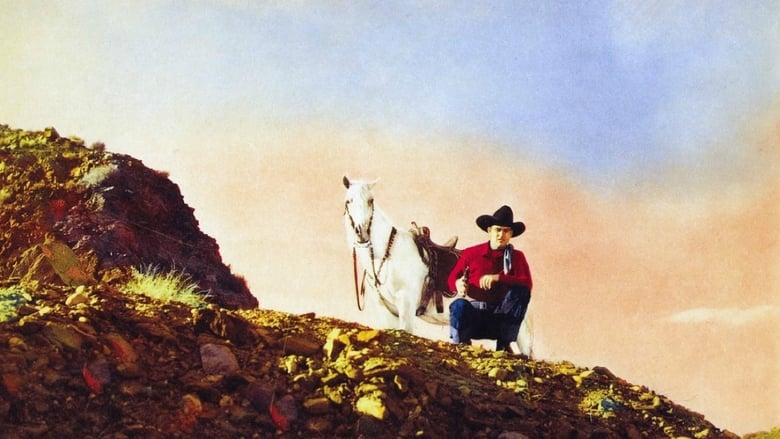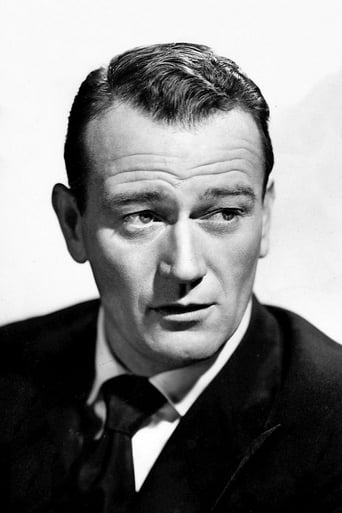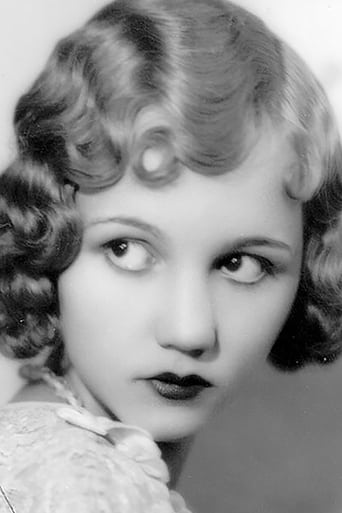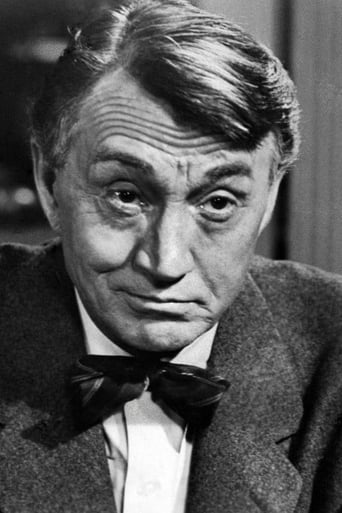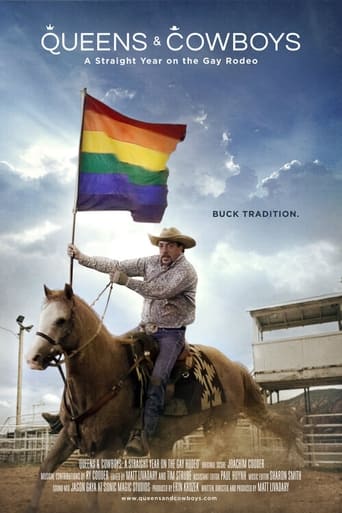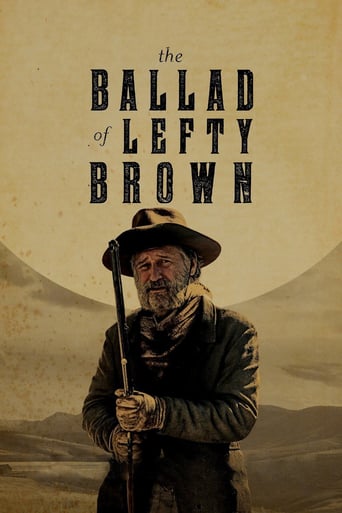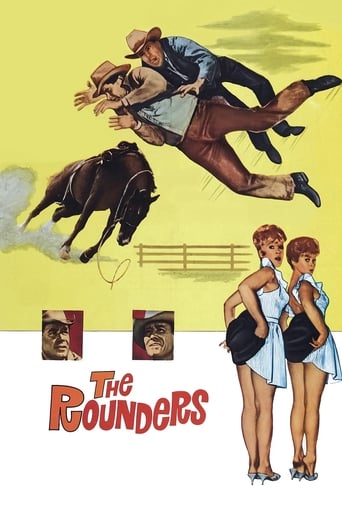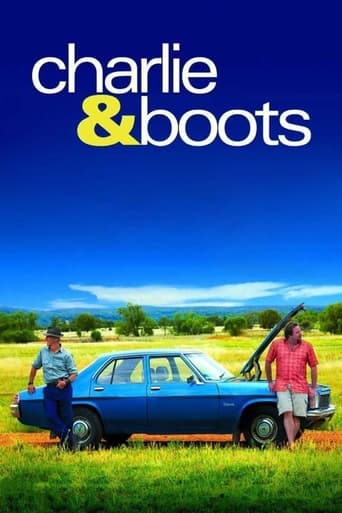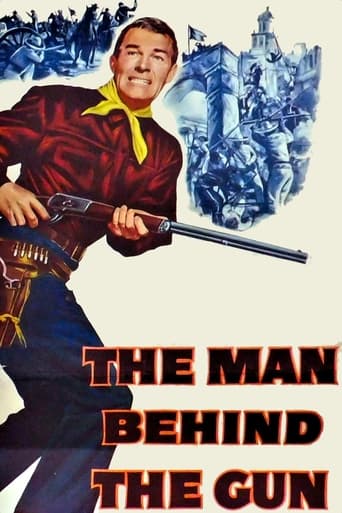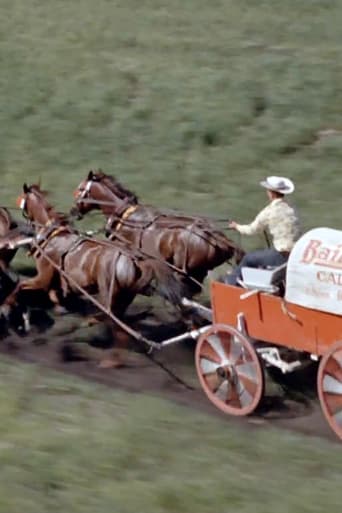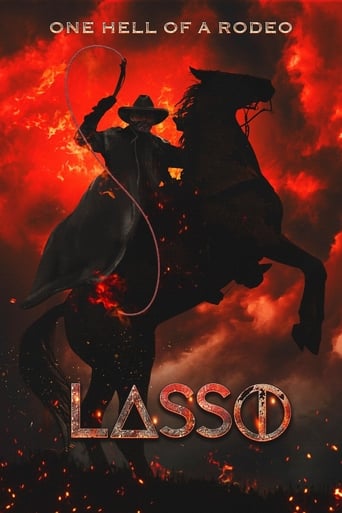The Desert Trail (1935)
Rodeo star John Scott and his gambler friend Kansas Charlie are wrongly accused of armed robbery. They leave town as fast as they can to go looking for their own suspects in Poker City.
Watch Trailer
Free Trial Channels
Cast


Similar titles
Reviews
You won't be disappointed!
An absolute waste of money
The movie turns out to be a little better than the average. Starting from a romantic formula often seen in the cinema, it ends in the most predictable (and somewhat bland) way.
It is interesting even when nothing much happens, which is for most of its 3-hour running time. Read full review
John Wayne (John Scott), Mary Kornman (Anne), Eddy Chandler (Kansas Charlie), Paul Fix (Jim), Carmen Laroux (Juanita LaRoux), Lafe McKee (Sheriff Barker), Al Ferguson (Pete), Henry Hall (Farnsworth), Archie Ricks (stage driver), Theodore Lorch (robbed stage passenger), Gordon De Main (stage passenger), Silver Tip Baker, Frank Ellis, Wally West (poker players), Frank Ball (banker), Frank Brownlee (Rattlesnake Gulch sheriff), Tommy Coats, Artie Ortego, Tex Palmer (deputies), Dick Dickinson (man watching poker game), Jack Evans, Ray Henderson (townsmen), Lew Meehan (posse rider), Fred Parker (doctor).Director: LEWIS D. COLLINS. Original screenplay: Lindsley Parsons. Photography: Archie Stout. Film editor: Carl Pierson. Art director: E.R. Hickson. Music director: Lee Zahler. Sound recording: John A. Stransky, junior. Producer: Paul Malvern.A Lone Star Western, not copyrighted by Monogram Pictures Corporation. No recorded New York opening. U.S. release: 22 April 1935. U.K. release through Pathé: 18 November 1935. 54 minutes.SYNOPSIS: Difficult to summarize the plot of this unusual western, concerning the adventures of a rodeo rider and his card-sharp sparring partner, who object to the champ being paid off with two bits on the dollar. So they force the promoter to pay out the full amount of the champ's winnings at the point of a gun. Almost immediately afterwards, the pay office is cleaned out by a pair of bandits who point their fingers at our hero and his sidekick. The scene switches to the hacienda of a vampish senorita. It turns out that this siren has vamped not only our hero and his sidekick, but one of the bandits as well. After a series of complications with the bandit hiding in the closet, the story really gets under way in a different town altogether when our hero rescues a runaway stagecoach after the driver has been shot by the very same badmen who robbed the rodeo office. Hero and his unlikely off-sider now vie for the attentions of a pretty storekeeper, whose brother turns out to be one of the bandits who really robbed the stage and the rodeo! This, of course, is where the story really starts. But, never mind: Most of these elements are cleverly tied together at the finish in which the heroine (that's right, the heroine!) rides to the rescue in a buckboard! COMMENT: I don't know why director Lewis D. Collins opted to hide his contribution under the pseudonym "Cullen Lewis". Aside from obvious stock footage in the rodeo sequences, this rates as an unusually well-produced and smartly directed entry in the Lone Star series. Wayne turns on the virile charm and makes a most ingratiating lead. We love the sparks that constantly fly between him and his unlikely (but fascinating) off-sider, Eddy Chandler. We also enjoyed the performances of both Mary Kornman (as the icy storekeeper who tries to put Wayne in his place) and Carmen Laroux (who turns on the heat as a Mexican vamp). Despite some familiar plot elements, the script is both cleverly out-of-the-rut and highly entertaining. The dialogue is especially deft. At the same time, the plot incorporates more than enough action to satisfy the fans.
Give the producers at Monogram Pictures (a. k. a. Lone Star) some credit: They gave John Wayne here a chance to try some comedy, and the Duke delivers. It's a shame the result is buried in another lame C- western with a poor script and below-par acting.Rodeo rider John Scott (Wayne) and his gambler companion Kansas Charlie (Eddy Chandler) get mixed up in a case of mistaken identity when they are blamed for stealing money from a crooked rodeo and murdering its promoter. Lying low in another town under assumed names, they find themselves on the wrong side of the law again, thanks to the machinations of the promoter's real killers.Watching Wayne cut up here with Chandler is kind of fun, especially early on. Director Cullen Lewis starts us off with a scene where the two are playing cards, and a tight close-up shows Kansas Charlie dealing himself an ace from the bottom of the deck. Scott catches him, though he's not angry at the duplicity so much as disgusted by the awkwardness of the move."You're terrible!" Scott exclaims. "Try any of those phony tricks at Rattlesnake Gulch, they'll run you out quicker than they did at the last place!"Watching Scott and Kansas Charlie bicker is fun for a while. Unfortunately, that's about all "The Desert Trail" has to offer. The conflict with the killers is awkwardly presented and left unresolved, even after one of them returns to steal Scott's money and Kansas Charlie's watch. Instead of trying to clear their names or catch the thief, Scott and K. C. hightail it to another town, where they meet pretty storekeeper Anne (Mary Kornman) and develop a new line of bickering over her. Seeing Wayne play a rather crooked character is kind of interesting; unfortunately this Scott guy and his pal are pretty dumb, too.Wayne enthusiasts may find his performance as noteworthy as I did; they may also like seeing Paul Fix, a regular in many Wayne movies, playing one of the killers who's also Anne's brother. Fix is terrible in this movie, perhaps because he was a busy guy (he appeared in 14 other movies in 1935 alone) and the character is so badly written. He doesn't want to kill and steal, but his nasty partner Pete (Al Ferguson) keeps threatening to turn him in if he doesn't go along. How would Pete do this without incriminating himself? Scott and Kansas aren't the only two characters in "Desert Trail" not long on brains.The film ambles along fretfully, with odd shoot-outs (odd because Wayne is often shooting at good guys) and cruel horse stunts (they tripped the horses in full gallop with wire, and a couple of the stunts here appear to have been fatal) breaking up largely comic interludes involving Scott, Kansas, and Anne. Kornman, a fetching woman with skills honed from her childhood career in silent "Our Gang" comedies, plays well off Wayne, especially when he tries to schmooze her by making her climb a ladder for some "nerve tonic." She points out nerve tonic is something he doesn't seem to need.With some better scripting, either in the way of a coherent cowboy actioner or a more focused comedy, "Desert Trail" might have risen above the batch of cheapo films Wayne starred in in his own desert years, after "The Big Trail" and before "Stagecoach." But it just doesn't gel enough, or go anywhere interesting beyond the occasional funniness.
One of the more 'literate' Lone Stars, with time spent on character development and interaction, dialog and acting business. The opening scene sets the stage (literally) for the personalities of the gambler, Kansas Charlie (Eddy Chandler), and his buddy, John Scott (John Wayne) the rodeo (say Roh-Day-oh) star, both of whom are slightly randy. The film follows their adventures, as they try to best each other in the pursuit of the Mexican Juanita, and later in their pursuit of perky Mary Kornman, who has the inevitable evil brother (though he'd been led astray by the real villain, and wants to repent). And oh, of course, they're being wrongly accused of two crimes and have to serve jail time before escaping and being exonerated at the end.The high point is Scott continually and deliberately ogling Mary's butt in her grocery store, and knocking away the ladder she's standing on so he can catch her and grab her as she falls. It all seems a little contemporary for a 30s western, but it sounds better than it actually is. Sadly, the exciting action elements we find in many other Lone Stars are sorely missing here. No Yakima Canutt. Cheap and bad uses of stock footage of riders falling off horses. No George Hayes. Tedious Stooge-like bi-play between Scott and Charlie, with Charlie swinging at Scott, Scott stomping on his foot and then punching him (repeated two more times!). The skilled Paul Fix is underused. Eddy Chandler himself, here in his big star turn, is not really believable as a randy side kick. The villain looks too old and fat. So does Chandler, who spent his later career in 300 more movies as an uncredited meatloaf. Mary Kornman, of the twenties "Our Gang" (see 'Mary, Queen of Tots' 1925) is cute in her scenes with John Wayne, but that's about it for this one. Seeds of a better western lie buried here.P.S. The ultra-short colorized version, which looks good, moves along so fast, it's over if you blink more than once. Thankfully though, the embarrassing scenes with Eddy Chandler have been cut.
Before I explain the "Alias" comment let me say that "The Desert Trail" is bad even by the standards of westerns staring The Three Stooges. In fact it features Carmen Laroux as semi- bad girl Juanita, when you hear her Mexican accent you will immediately recognize her as Senorita Rita from the classic Stooge short "Saved by the Belle". In "The Desert Trail" John Wayne gets to play the Moe Howard character and Eddy Chandler gets to play Curly Howard. Like their Stooge counterparts a running gag throughout the 53- minute movie is Moe hitting Curly. Wayne's character, a skirt chasing bully, is not very endearing, but is supposed to be the good guy. Playing a traveling rodeo cowboy Wayne holds up the rodeo box office at gunpoint and takes the prize money he would have won if the attendance proceeds had been good-the other riders have to settle for 25 cents on the dollar (actually even less after Wayne robs the box office). No explanation is given for Wayne's ripping off the riders and still being considered the hero who gets the girl. Things get complicated at this point because the villain (Al Ferguson) and his sidekick Larry Fine (played by Paul Fix-who would go on to play Sheriff Micah on television's "The Rifleman") see Wayne rob the box office and then steal the remainder of the money and kill the rodeo manager. Moe and Curly get blamed. So Moe and Curly move to another town to get away from the law and they change their names to Smith and Jones. Who do they meet first but their old friend Larry, whose sister becomes the 2nd half love interest (Senorita Rita is left behind it the old town and makes no further appearances in the movie). Larry's sister is nicely played by a radiantly beautiful Mary Kornman (now grown up but in her younger days she was one of the original cast members of Hal Roach's "Our Gang" shorts). Kornman is the main reason to watch the mega-lame western and her scenes with Moe and Curly are much better than any others in the production, as if they used an entirely different crew to film them. Even for 1935 the action sequences in this thing are extremely weak and the technical film- making is staggeringly bad. The two main chase scenes end with stock footage wide shots of a rider falling from a horse. Both times the editor cuts to a shot of one of the characters rolling on the ground, but there is no horse in the frame, the film stock is completely different, and the character has on different clothes than the stunt rider. There is liberal use of stock footage in other places, none of it even remotely convincing. One thing to watch for is a scene midway into the movie where Moe and Curly get on their horses and ride away (to screen right) from a cabin as the posse is galloping toward the cabin from the left. The cameraman follows the two stooges with a slow pan right and then does a whip pan to the left to reveal the approaching posse. Outside of home movies I have never seen anything like this, not because it is looks stupid (which it does) but because a competent director would never stage a scene in this manner. They would film the two riders leaving and then reposition the camera and film the posse approaching as a separate action. Or if they were feeling creative they would stage the sequence so the camera shows the riders in the foreground and the posse approaching in the background. Then again, what do I know? I'm only a child.


